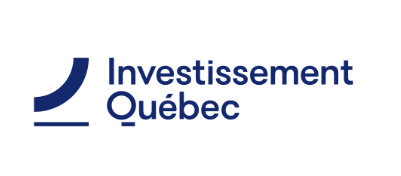Government policies and regulations hobbling investment in natural resources sector that could boost Canada’s productivity
Government policies and regulations are driving away investment in natural resource industries just when the sector could be boosting Canada’s productivity and economic growth, panelists told Canada’s Productivity Summit in Calgary.
 “In our business, the biggest challenge is policy and regulatory uncertainty. It’s huge. It’s why people aren’t investing,” said Jeff Lawson (photo at right), senior vice-president, corporate development, and chief sustainability officer at Alberta-based oilsands producer Cenovus Energy.
“In our business, the biggest challenge is policy and regulatory uncertainty. It’s huge. It’s why people aren’t investing,” said Jeff Lawson (photo at right), senior vice-president, corporate development, and chief sustainability officer at Alberta-based oilsands producer Cenovus Energy.
Canada’s oil and gas industry is grappling with “tiers and tiers” of different federal government policies all layered on top of each other, he said. “There’s an escalating industrial carbon tax, methane regulations, clean fuel regulations, a potential [oil and gas] emissions cap coming which we think is bad policy.”
It’s extremely difficult to make long-term investment decisions involving billions of dollars in such a policy and regulatory environment, he said.
“We’re not seeing a policy focus on the economy of Canada, making it better, making it stronger, making it more productive, making things more affordable for people, having a better balance sheet as a country,” Lawson said.
 Mark Parsons (photo at left), vice-president and chief economist at ATB Financial, said businesses aren’t as worried about labour shortages, supply chain issues and cost pressures as they are about “uncertainty.”
Mark Parsons (photo at left), vice-president and chief economist at ATB Financial, said businesses aren’t as worried about labour shortages, supply chain issues and cost pressures as they are about “uncertainty.”
This uncertainty involves policy risk, taxes and regulation, credit conditions and other issues, he said. “One of the things we heard from the energy industry is that policy risk is ranked at the top,” with concerns about overlapping regulations and regulatory complexity weighing on investment decisions.
Declining investment is affecting Canada’s trade balance, with the country having a merchandise deficit in August of $1.2 billion, Parsons said.
Yet the energy industry saw a $12-billion surplus in trade, while the agricultural industry’s trade surplus was $2 billion, he noted. “So without agriculture and energy, this country would be running a very large merchandise deficit.”
 “Our natural resource industries are the most productive in the country and have even more to give to the Canadian economy,” said panel moderator Brad Herald (photo at right), senior special advisor to the Canadian Association of Petroleum Producers. “We need to get our best players on the field to fix [Canada’s] productivity problem.”
“Our natural resource industries are the most productive in the country and have even more to give to the Canadian economy,” said panel moderator Brad Herald (photo at right), senior special advisor to the Canadian Association of Petroleum Producers. “We need to get our best players on the field to fix [Canada’s] productivity problem.”
Investment in Canada’s oil and gas industry has increased steadily since 2020, but it remains far below record levels achieved in 2014, according to a study released earlier this year by the Fraser Institute. Investment in the sector fell from $76 billion in 2014 to $35 billion in 2023.
The Fraser Institute’s study included a survey which found that, on average:
- 68 percent of respondents are deterred by the uncertainty concerning environmental regulations in Canada compared with 41 percent in the U.S.
- 54 percent of respondents in Canada are deterred by regulatory duplication and inconsistencies compared with 34 percent in the U.S.
- 45 percent of respondents in Canada indicated that uncertainty concerning disputed Indigenous land claims is a deterrent to investment in Canada’s provinces compared with 25 percent for the U.S.
- Overall, the U.S. performs better than Canada in 13 out of the 16 policy factors determining Canada-U.S. energy sector competitiveness.
 Everyone cares about the environment, “but it’s now to the point [where] for a long time we’ve privileged those who are against development rather than those who did development,” said Heather Exner-Pirot (photo at left), director of energy, natural resources and environment at the Macdonald-Laurier Institute and special advisor to the Business Council of Canada.
Everyone cares about the environment, “but it’s now to the point [where] for a long time we’ve privileged those who are against development rather than those who did development,” said Heather Exner-Pirot (photo at left), director of energy, natural resources and environment at the Macdonald-Laurier Institute and special advisor to the Business Council of Canada.
Lack of investment is hurting Canada’s mining industry and electricity industry even more than the oil and gas industry, she said.
The federal, Ontario and Quebec governments have together committed more than $50 billion to manufacturers of batteries and other products in the electric vehicle manufacturing value chain that require critical minerals, she pointed out.
But Canada over the last decade has actually produced about 40 percent less graphite, cobalt and nickel, and nine per cent less copper (whose production peaked in 1991), she noted.
“We may think of ourselves as a mining nation, but that has been atrophying to a great deal and even more so on the processing and refining side,” Exner-Pirot said.
Federal government’s environmental assessment process criticized
According to Natural Resources Canada’s annual major projects inventory report, hundreds of energy projects are planned or under construction between 2022 and 2033.
The number of active energy projects increased by 23 (from 320 projects in 2022 to 343 projects in 2023), and the total potential value of these projects increased from $427 billion to $474 billion.
This includes 87 oil and gas-related projects valued at $319 billion, and 182 electricity generation and transmission projects valued at nearly $99 billion.
Despite worries about investment in the oil and gas industry, capital expenditures on oil and gas are forecasted to exceed $40 billion in 2025, the highest level in a decade, according to a new report by Enserva, a national association representing the service, supply and manufacturing sectors of the Canadian energy industry.
A boost in export capacity brought on by the Trans Mountain Pipeline expansion and the LNG Canada project in Kitimat on the West Coast, which is set to begin commercial operation in mid-2025, are driving the spending increases that are expected to grow oil and gas production in the coming months, according to the report.
The oil and gas industry also is seeing record profits within Canada. Coming out of the COVID pandemic, operating profits in the sector increased tenfold from $6.6 billion in 2019 to $66.6 billion in 2022.
The panelists at Canada’s Productivity Summit criticized the federal environmental Impact Assessment Act (IAA), enacted in 2019, as being a main impediment to investment in the natural resources sector and a chief reason for Canada’s inability to build major resource projects.
It takes eight to 16 years in Canada to build an electricity transmission line,” Herald noted. “You almost have to be clairvoyant in Canada now to take that leap and navigate through that [environmental assessment] process.”
“The Impact Assessment Act has had a terrible impact on investment,” Exner-Pirot agreed.
The Cedar LNG project, a proposed floating LNG facility offshore of Kitimat, is the only one that has made it through the federal environmental assessment process recently, she said. Despite Canada having a critical minerals strategy, the number of new mines and other projects required is not happening fast enough under Ottawa’s assessment process, she added.
Exner-Pirot pointed to an incident that occurred during construction of the recently completed TransMountain Pipeline from Alberta to Burnaby, B.C. In April 2021, Environment and Climate Change Canada enforcement officials caught subcontractors felling trees in an active nesting area of protected migratory birds, including the Anna’s hummingbird in Burnaby. Construction of the pipeline was delayed until August of that year.
“There is a trade-off between building a pipeline faster and saving a hummingbird nest. And that trade-off is about $100 million,” Exner-Pirot said. “That’s about what it cost to delay that project to save that hummingbird nest for that breeding season.”
She noted that the Supreme Court of Canada ruled, in a non-binding advisory opinion in October 2023, that the federal Impact Assessment Act needed to be changed because parts of the legislation are unconstitutional. The unconstitutional portion included the definition of “designated projects,” making them automatically subject to federal review.
But the government “did not change it in a way that would move the dial whatsoever for attracting more investment, for mining or for otherwise,” Exner-Pirot said.
For example, NexGen Energy and investors are “champing at the bit to get shovels in the ground” on the company’s Rook I uranium mine and processing mill in Saskatchewan, she said. But in February, the Canadian Nuclear Safety Commission put the regulatory process on pause for 24 months until the federal environmental assessment has been completed.
Investors in New York call the federal environmental assessment legislation the “Don’t Invest in Canada Act,” Exner-Pirot said. “Regulation is supposed to protect us from risk, not from progress. Regulation is now preventing us from progress.”
 Regulations are needed and exist to mitigate or manage risk, said panelist Gitane De Silva (photo at right), founder and principal of Calgary-based consulting firm GDStrategic and former CEO of the Canada Energy Regulator.
Regulations are needed and exist to mitigate or manage risk, said panelist Gitane De Silva (photo at right), founder and principal of Calgary-based consulting firm GDStrategic and former CEO of the Canada Energy Regulator.
Canada’s regulatory system needs to quicker and more nimble, she said. “Yet if you have too little regulation, you can end up with a 737 Max,” she added, referring to Boeing’s airliner plagued by problems, including two similar crashes in less than five months that killed 346 people.
Canada’s regulations and regulatory processes need to be de-politicized, De Silva said. “There was a conscious decision in Bill C-69 [which created the Canada Energy Regulator] to increase the influence of cabinet over regulatory decisions.”
Under the IAA or the Canadian Energy Regulator Act, the decision made by the regulator then goes to cabinet for final approval. But this isn’t the case with nuclear projects, where the Canadian Nuclear Safety Commission makes the final regulatory decision and then informs cabinet.
While some major resource projects have been cancelled due to the unwelcoming investment climate, decisions to cancel Teck Resources Ltd.’s Frontier oilsands mine in 2020 and put a pause on renewable energy projects in Alberta (followed by restrictions on such projects) were political decisions, De Silva said.
The federal and provincial governments share jurisdiction in some environmental areas, such as navigable waters and fisheries, she pointed out.
“So [we] need to work together. And I think that’s a great challenge in Canada at the moment. Many provinces and Ottawa aren’t getting along super well. We need to focus more on that desire to actually get things done.”
Indigenous investment in natural resources sector is a “bright light”
Lawson from Cenovus Energy argued that federal policy is so focused in certain areas it is impeding productivity and business.
“Most foreign countries have sold out of this country [in oil and gas]. They do not want to operate here anymore,” he said. “There might be a variety of reasons for that but one reason may be how difficult it is to expand or bring new projects online.”
Panelists said one positive sign is the increasing Indigenous investment in the natural resources sector, which Herald noted has now surpassed $4 billion.
The Alberta government-backed Alberta Indigenous Corporation has already invested about $750 million, which will increase if a $1-bilion equity loan guarantee to support Indigenous equity-owned minority partnership in TC Energy Corp.’s Western Canadian natural gas transmission network goes through, Exner-Pirot said.
“I defy you to find a better sector in the world than Canadian oil and gas in terms of the work they’ve done to provide really good participation, equity benefits and impact benefit agreements [to Indigenous communities],” she said.
Lawson said Cenovus over the past five years has spent $1.5 billion on services provided to Cenovus projects by Indigenous partners. So far this year, the company has spent $650 million – the most money Cenovus has ever spent on Indigenous partnerships.
In the oilsands industry, he added, an Indigenous worker is paid $150,000 per year, compared with about $52,000 a year for the average Indigenous worker in Canada.
Cenovus also created an Indigenous Housing Initiative to build 200 homes in six First Nations and Métis communities closest to the company’s oilsands operations in northern Alberta. The company has so far spent $60 million on the project.
The oilsands industry also is exploring alternatives to burning natural gas to produce steam for steam-assisted gravity drainage (SAGD) production facilities, which inject pressurized steam underground to loosen bitumen deposits and bring them to the surface.
Imperial Oil is experimenting with using a new solvent (a type of light oil) instead of steam to recover bitumen. And oilsands producers are investigating building small modular nuclear reactors to provide the energy needed for SAGD operations, Lawson said.
The industry also is using artificial intelligence to target the most productive bitumen deposits underground. AI, along with emerging bitumen-recovery technologies, will reduce the industry’s energy use and greenhouse gas emissions, he said.
Alberta's oil and gas industry has reduced its methane emissions by 52 percent since 2014 even as production has continued rising, the Alberta government said last week in a statement.
Canada faces renegotiating the United States-Mexico-Canada free trade agreement in 2026, now with a trade protectionist president under president-elect Donald Trump, who has threatened to slap a 10-percent to 20-percent universal tariff on all imports to the U.S.
The U.S. imported the most oil ever from Canada this summer and 60 percent of their oil imports now come from Canada, Exner-Pirot said. “We are indispensable to the United States when it comes to energy and increasingly critical minerals.”
CBC News reported that Trump's former U.S. commerce secretary, Wilbur Ross, said on Rosemary Barton Live that he "can't imagine" Trump would want to tax Canadian energy because it would raise U.S. costs and not help provide more American jobs,
But Exner-Pirot said that with free trade negotiations looming, “it would be crazy to do something like a production cap, an emissions cap [as Ottawa proposes],” which would take about 600,000 to 2 million barrels of oil out of production, “All of it will come at the Americans’ end.”
Instead of Canada shooting itself in the foot, she suggested, “let’s bring something to the [free trade negotiating table]. Let’s not diminish the sector.”
Lawson noted that Canada is blessed with strategic natural resources in agriculture, water, potash, oil and gas, and precious earth minerals that the rest of the world doesn’t have. “If we want to find a way to develop them and maximize the profit for Canada, with a bunch of [positive] ripple effects to the country, we can do that.”
More than 700 business and community leaders attended Canada’s Productivity Summit, which was organized by the School of Public Policy, with the Government of Alberta as its presenting sponsor.
R$
| Organizations: | |
| People: | |
| Topics: |
Events For Leaders in
Science, Tech, Innovation, and Policy
Discuss and learn from those in the know at our virtual and in-person events.
See Upcoming Events
You have 1 free article remaining.
Don't miss out - start your free trial today.
Start your FREE trial Already a member? Log in
By using this website, you agree to our use of cookies. We use cookies to provide you with a great experience and to help our website run effectively in accordance with our Privacy Policy and Terms of Service.



.png)

